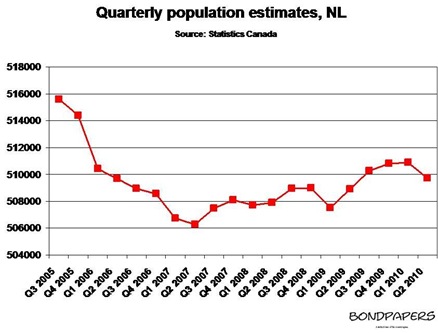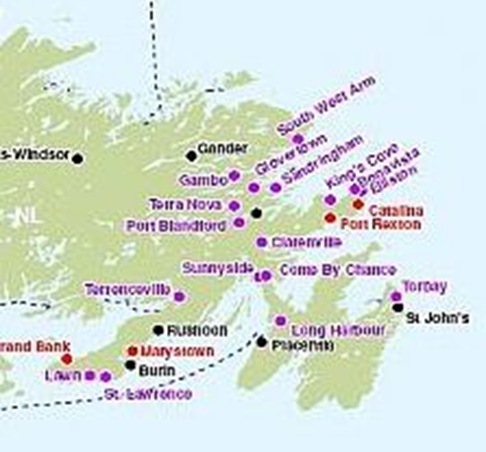Jack Layton and the New Democratic Party want the federal government to drop the goods and services tax on home heating costs.
Layton had a wonderful story to go with his call, as recounted by Aaron Wherry at macleans.ca:
“Mr. Speaker, Frank Rainville is a senior in Sturgeon Falls, Ontario who told me about how his bills for basic utilities have gone up by $20 a month just this past month because of the government’s HST,” the NDP’s Jack Layton reported a short time later. “He asked me how he could cope with heating bills when he has to turn the thermostat on because it is cold up there. The fact is heating bills are going up all across the country and working families are struggling right now. Will the Prime Minister show some leadership, join with us and work to take the federal sales tax off home heating fuel now?”
Yes, folks, Jack Layton and his fellow new Democrats are standing up for the working poor, people and fixed incomes and all sorts of downtrodden, hard-done-by people. Well, at least that’s what the die-hard Dippers out there will tell you.
But just think about it for a second. Mr. Rainville is going to have to cough up an extra $20 a month for heating thanks to what Layton has taken to calling the Harper Sales tax. Rainville’s on a fixed income and that 20 bucks will come in handy. Even though Layton’s little HST cut is aimed primarily at voters in Ontario and British Columbia where the HST is very unpopular, there are plenty of Mr. Rainvilles throughout Newfoundland and Labrador and the same cut to the heating costs will help them out, too.
Yay, Jack.
Well, not so fast.
These sorts of blanket tax cuts – the stock in trade of conservatives - have the wonderful effect of cutting costs and they have the even more wonderful effect – from a Connie perspective of helping rich people proportionately more than people like Mr. Rainville. In St. John’s someone in public housing will get a break, but the person down in King William Estates or one of the other swankier neighbourhoods springing up in St. John’s East will just love the cut on heating oil or electricity that it takes to make their blimp hangers all the more cozy in the cold January night.
If Jack Layton really wanted to help people on fixed incomes, he’d go for something other than a blanket tax cut. Layton and his crew would offer rebates or - better still - tax breaks tied to income. That way the people who need the help the most could get it and those who can well afford to heat their massive homes can carry right on doing so while footing the bill for their choices.
And actually the problem is not just with giving a disproportionate big break to the wealthy – as the NDP idea would do – or carrying a huge public deficit while helping out the wealthy. That’s all bad enough just as it is bad enough that the average Republican looking at this scheme would embrace Layton as a discipline of Karl.
Jack Layton’s tax cut idea is also damned poor environmental policy. Canadians don’t need to be rewarding energy inefficiency or giving people the chance to consume more energy. An across-the-board tax cut does just that. It potentially makes the NDP vulnerable on the left from the Greens, but there seems to be a conscious effort in the NDP thinking that they should just look for more votes in places where they can fight Conservatives, like out west or in a couple of ridings in Newfoundland. That’s pretty much in tune with the NDP position on the gun registry as well.
Now the NDP position isn’t all bad. They do want to bring back an energy efficiency incentive program. That’s a great idea and coupled with a targeted tax break scheme, it would be a progressive social policy.
Unfortunately, this isn’t about progressive social policy: the New Democrats are playing politics like Stephen Harper. This HST thing is just Connie-style retail politics.
And politically, it is a sensible - if monumentally cynical - thing to do if you want to get elected. Jack Harris in St. John’s East will win re-election handily with such an idea. All the well-heeled people in his district will love his conservative policies while the people on fixed and low incomes will get a bit of cash to make them happy too. Over in St. John’s South-Mount Pearl, the same thing applies even if there aren’t as many people with giant houses there.
Basically these sorts of Conservative-looking policies might help sagging New Democrat fortunes in a place like St. John’s where, as bizarre as the idea might seem, Conservatives will vote New Democrat if they can’t vote Connie for some reason.
It might work. Too bad for Jack Layton and the New Democrats there likely won’t be an election for some months yet. By the time people head to the polls federally, this sort of thing will likely be long forgotten. But in the meantime it is interesting to see just exactly how much influence Stephen Harper and his Conservative Party have had on Canadian politics.
- srbp -



